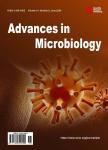Evaluation of Antimicrobial Susceptibility by <i>Staphylococcus aureus</i>Isolated from the Nutrition Service of a Teaching Hospital
Evaluation of Antimicrobial Susceptibility by <i>Staphylococcus aureus</i>Isolated from the Nutrition Service of a Teaching Hospital作者机构:Nutrition Course Faculty of Health Sciences Sã o Paulo Western University-UNOESTE Presidente Prudente Brazil Master in Environment and Regional Development Sã o Paulo Western University-UNOESTE Presidente Prudente Brazil Biomedical Sciences Course Faculty of Health Sciences Sã o Paulo Western University-UNOESTE Presidente Prudente Brazil Master in Health Sciences Sã o Paulo Western University-UNOESTE Presidente Prudente Brazil
出 版 物:《Advances in Microbiology》 (微生物学(英文))
年 卷 期:2018年第8卷第4期
页 面:270-285页
学科分类:1002[医学-临床医学] 100214[医学-肿瘤学] 10[医学]
主 题:Staphylococcus aureus Multiresistance Contamination Manipulators
摘 要:The bacteria Staphylococcus aureus is found in the nasal passages, mouth and skin of the human population and stands out among foodborne diseases. Some causes of foodborne illness are related with food, handlers, and utensils contamination in a hospital’s nutrition service. The aim of this study was to investigate the presence of S. aureus in food handlers, equipment, counter-tops and utensils of the nutrition service of a teaching hospital. Samples of the environment, hands and nasal mucosa of employees of a nutrition service were collected with two sterile swabs, in 2016, March and June. A total of 134 samples were obtained, which were submitted to characterization tests Biochemistry and morphotinorial (gram staining, catalase and coagulase tests in tube), phenotypic evaluation by drug diffusion technique and D-test approach, and the biofilm phenotype characterization by culture on Congo Red Agar. Results showed high rates of S. aureus colonization, mainly in the kitchen, high frequency of antimicrobial resistance, especially erythromycin and the presence of multi-resistant microorganisms. Large number of positive samples was also found for biofilm production, with totality for the samples of handlers. We highlight the relevance of the data in virtue of the serious consequences and risks that can be triggered in the hospital environment.



